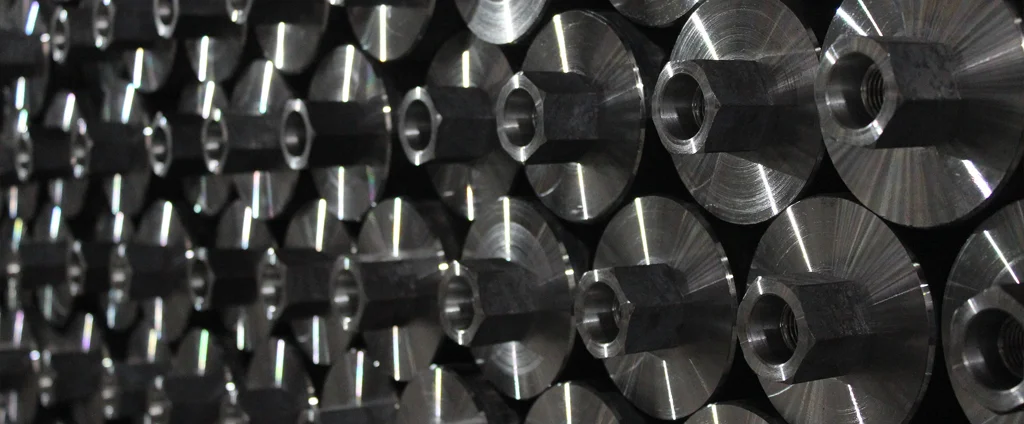SAE/AISI 1042 Carbon Steel (UNS G10420)

SAE/AISI 1042 carbon steel is highly regarded for its excellent machinability, toughness, and wear resistance. This medium-carbon steel can be heat-treated to achieve various hardness and strength levels, making it suitable for applications that require a combination of strength and durability.
| Chemical Composition | ||
|---|---|---|
| Element | Min | Max |
| Iron | 98.5% | 99.0% |
| Carbon | 0.40% | 0.47% |
| Manganese | 0.60% | 0.90% |
| Phosphorous | —— | 0.04% |
| Sulfur | —— | 0.05% |
The following table provides a list of SAE/AISI 1042 properties in both SI and US customary/Imperial units.
Click on the button to switch between Metric and Imperial units.
| Physical Properties | Metric |
|---|---|
| Density | 7845 kg/m3 |
| Mechanical Properties | Metric |
| Tensile Strength (Ultimate) | 550 - 700 MPa |
| Tensile Strength (Yield) | 300 - 580 MPa |
| Young’s Modulus (E) | 190 - 210 GPa |
| Bulk Modulus (K) | 140 GPa |
| Shear Modulus (G) | 80 GPa |
| Elongation at Break | 14 - 18% |
| Poisson’s Ratio (ν) | 0.27 - 0.30 |
| Brinell Hardness | 160 - 200 |
| Thermal Properties | Metric |
| Thermal Conductivity | 52 W/m·K |
| Specific Heat Capacity (Cp) | 470 J/kg·K |
| Coefficient of Thermal Expansion (αL) | 1.2×10-5 1/°C |
| Electrical Properties | Metric |
| Electrical Conductivity | 4.1×106 S/m |
| Electrical Resistivity | 2.4×10-7 Ω·m |
The values in this table are approximate and can vary depending on various factors such as the specific manufacturing process and heat treatment applied to the alloy.
Advantages & Disadvantages of 1042 Carbon Steel
| Advantages | Disadvantages |
|---|---|
| Good strength and toughness | Limited corrosion resistance |
| Good machinability | Lower hardness |
| Good weldability | Limited temperature resistance |
| Cost-effective |
Applications of 1042 Carbon Steel
SAE/AISI 1042 carbon steel is widely utilized across several industries for a variety of purposes. Key applications include:
- Machinery and Equipment Components: Commonly used to manufacture components and parts for machinery and equipment.
- Fasteners and Bolts: Suitable for producing fasteners such as bolts, screws, studs, and rivets due to its machinability and strength.
- Structural Applications: Applied in structural settings that demand moderate strength and toughness.
- Automotive Parts: Frequently used in the automotive industry for manufacturing various components.
- Hand Tools: Ideal for making hand tools such as wrenches, pliers, hammers, and chisels.
- Shafts and Rotating Machinery: Used in shafts and rotating machinery where high strength and toughness are required.
- Springs and Wire Forms: Suitable for manufacturing springs and wire forms, ensuring reliable performance.
